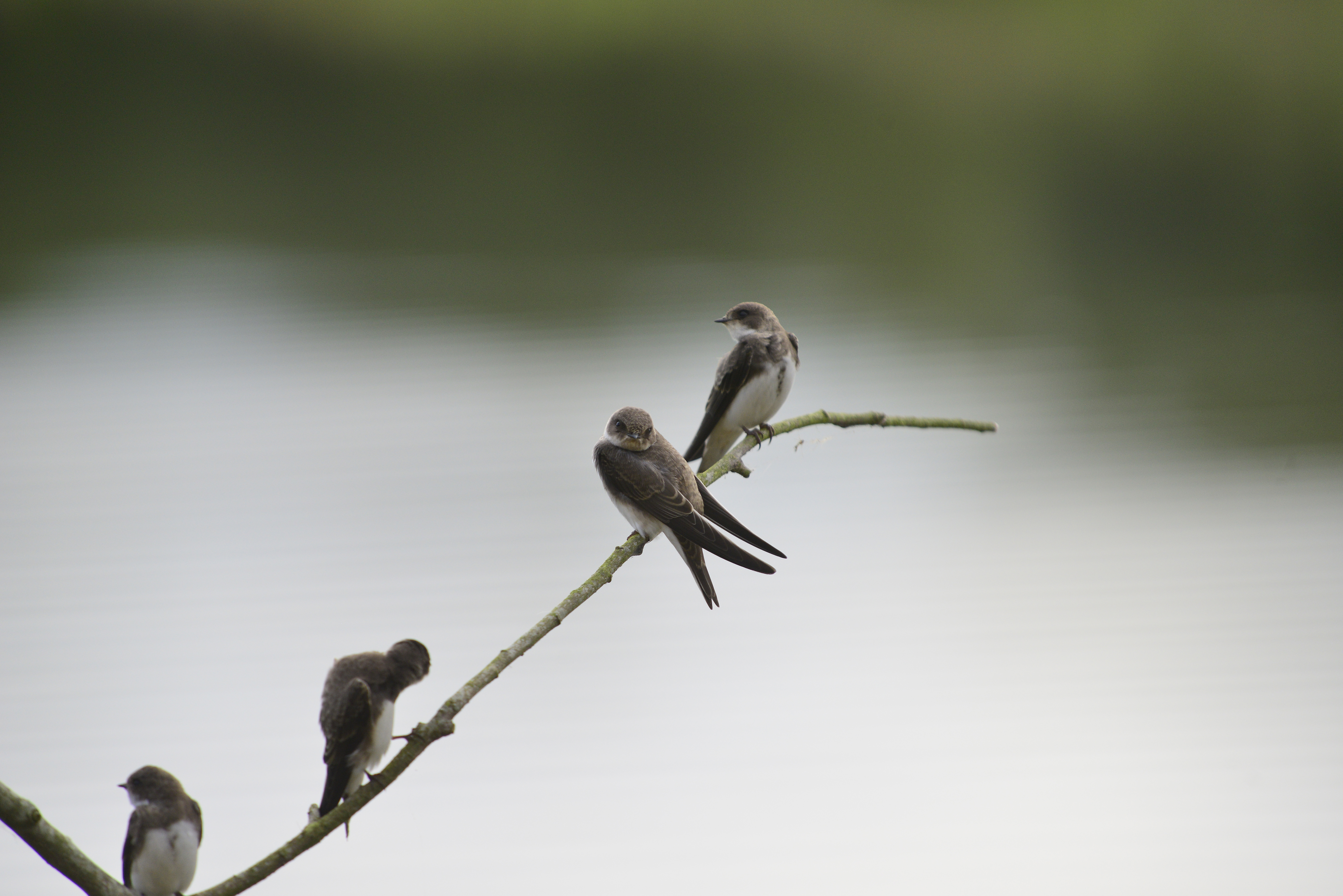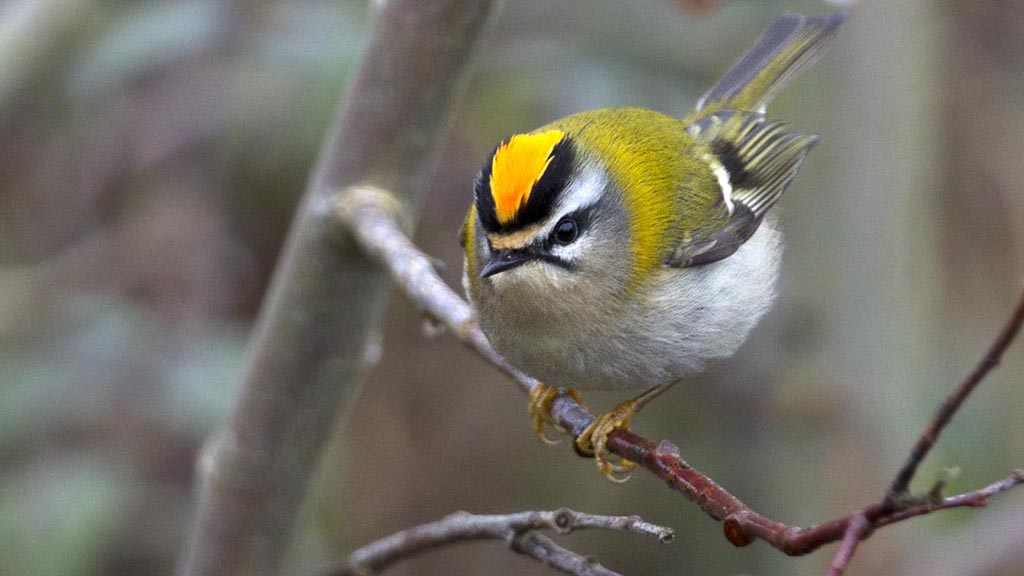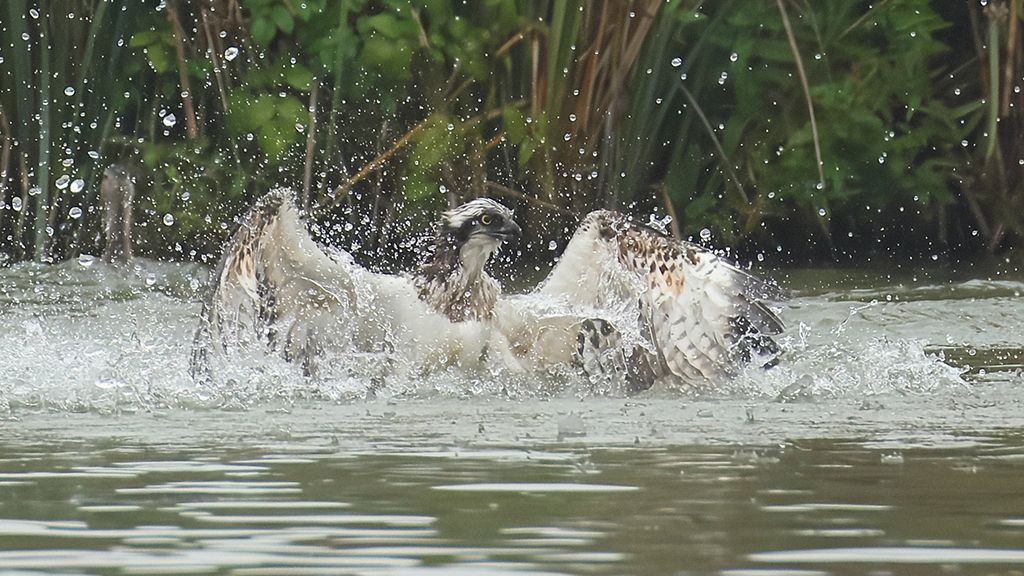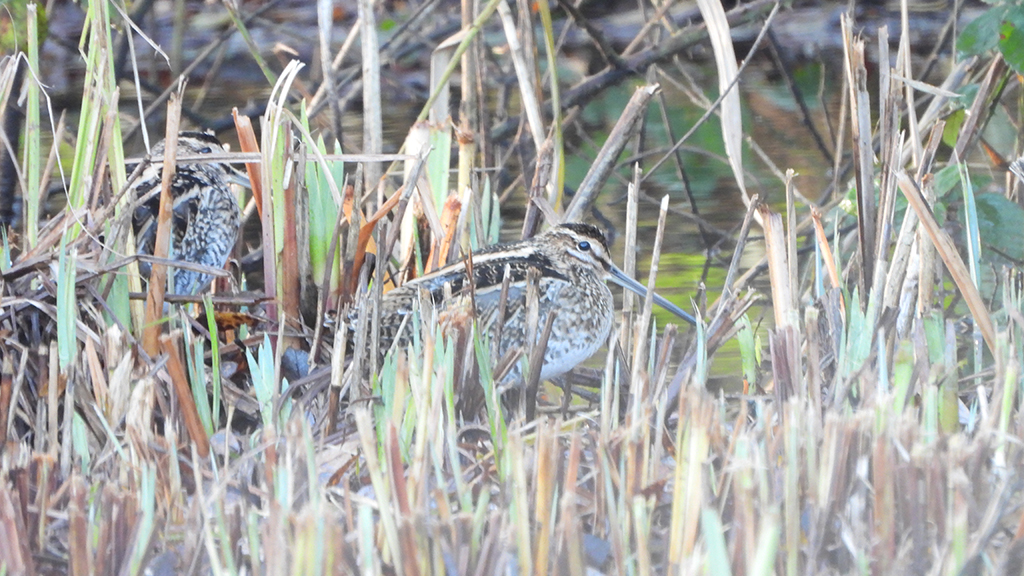Sand Martins start moving through

Monday morning I was greeted by the spectacle of approximately 400 house and sand martins swirling around a dark, moody sky, a truly fantastic sight. These fabulous aerobats are starting to gather before their epic migration to sub-Saharan Africa for the winter.
Sand martins have had a good summer on the reserve with several pairs raising two broods each in the artificial nesting banks of the Sand martin hide. These martins lay between three to seven eggs (usually four or five), which are sat on by both the female and the male for around 14 days. The young martins fledge between 19 and 24 days old, but are still dependent on their parents for about another week after fledging. It is incredible to think that these small young birds can undertake an arduous migration to Africa journey when only a matter of weeks old.
As many birds are still in moult, it seems fairly quiet on the reserve, although the peeping call of kingfishers are regularly heard all over the place. The “construction site” oystercatcher pair are still announcing their presence everywhere, but still quite insistent that they would like to live in the middle of the construction chaos, with their needy “teenager”!
A lone common sandpiper has been spotted on several occasions from the Ramsar and Sand Martin hides, feeding along the islands’ edges. The hubbub of juvenile tits and finches in the Woodland Loop is a lovely sight and sound, although squabbles over the feeders are quite common!
Reptiles have been enjoying the warm weather, with common lizards being spotted in various locations around the reserve and frequently photographed, by staff and visitors alike, on fence rails. The last reptile survey also showed a rather stunning female slow worm who looked almost gold-plated!
Water vole numbers had been declining recently, but this month’s latrine survey showed much increased usage, with 25% of latrines in use –up from 13% last month and between 2 and 4% from March to June. Our grounds warden Abbie has extended the area covered by our water vole survey as part of her degree studies. Let’s hope these locations are positive too.
Our most recent dragonfly survey showed an abundance of small red-eyed damselflies egg laying on algae in various water bodies. Brown hawker dragonflies are everywhere this week, in fact I don’t think I’ve ever seen so many. It has also been a great year for common blue butterflies and our recent Butterfly survey showed a brown hairstreak feeding on hemp agrimony.
by Suzi Lanaway, Reserve Warden



